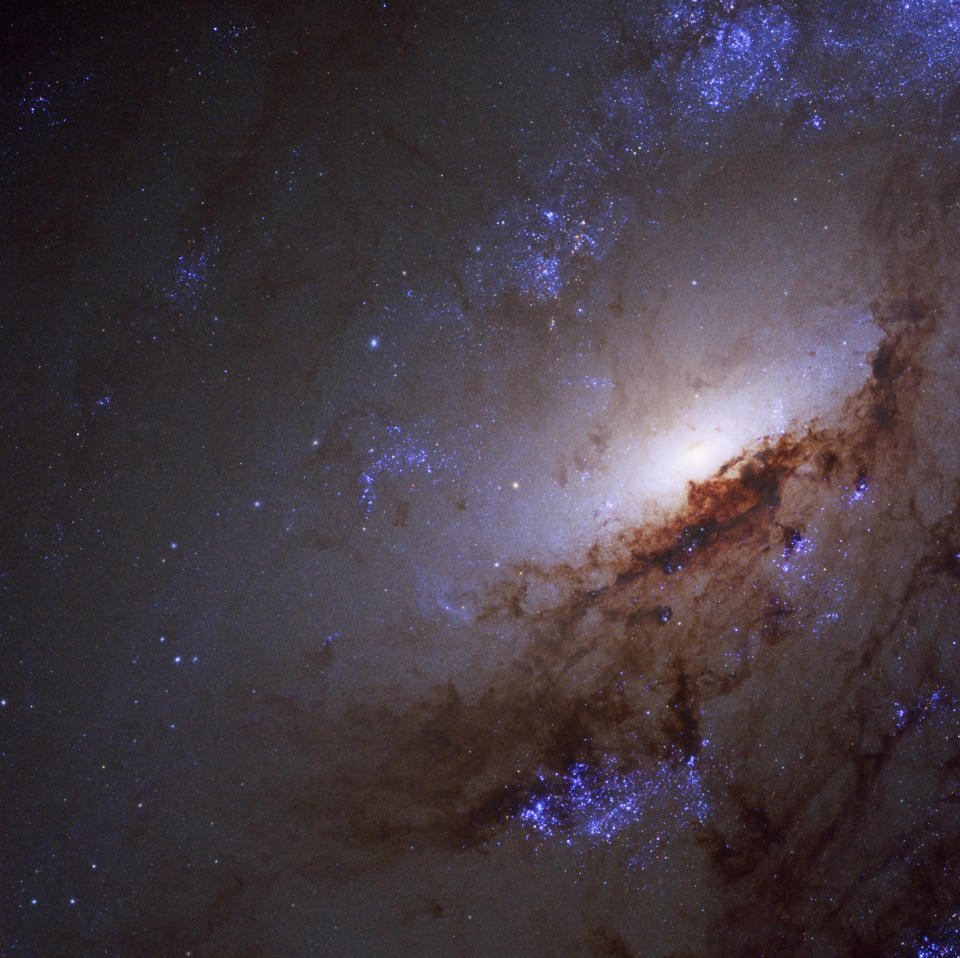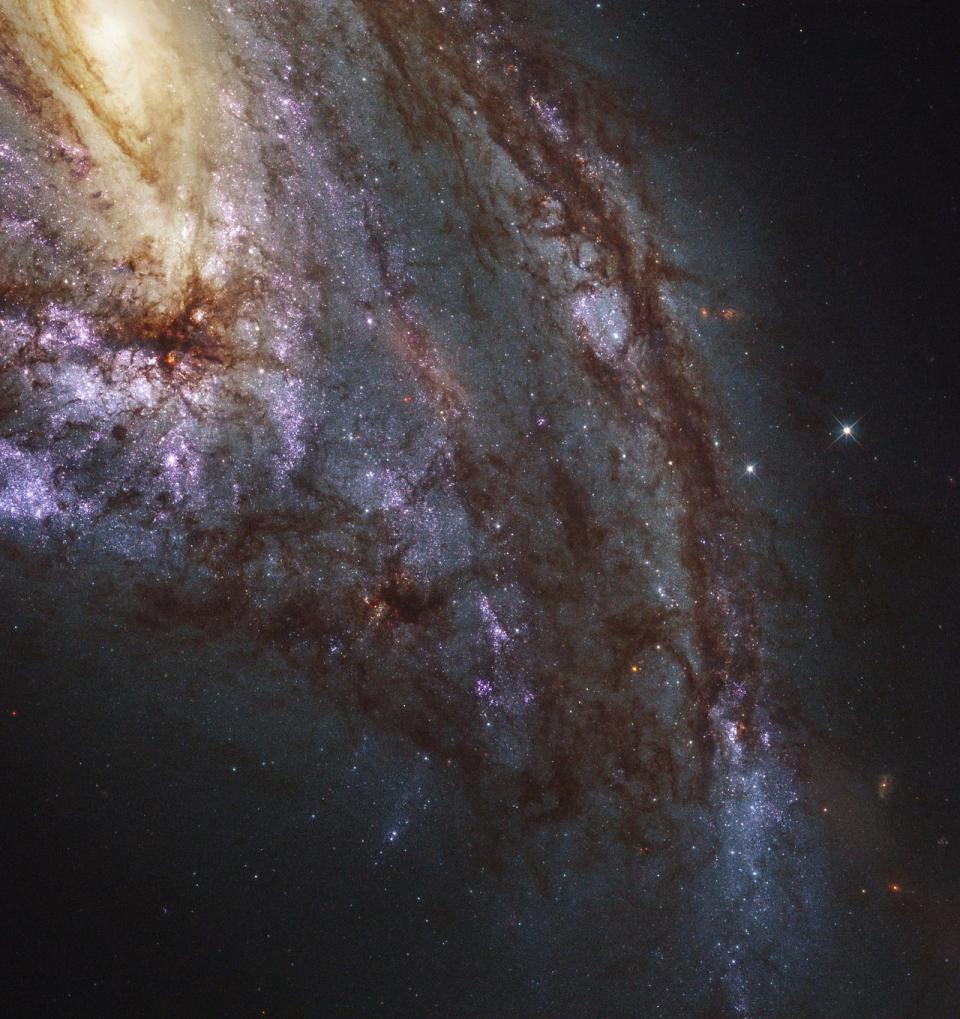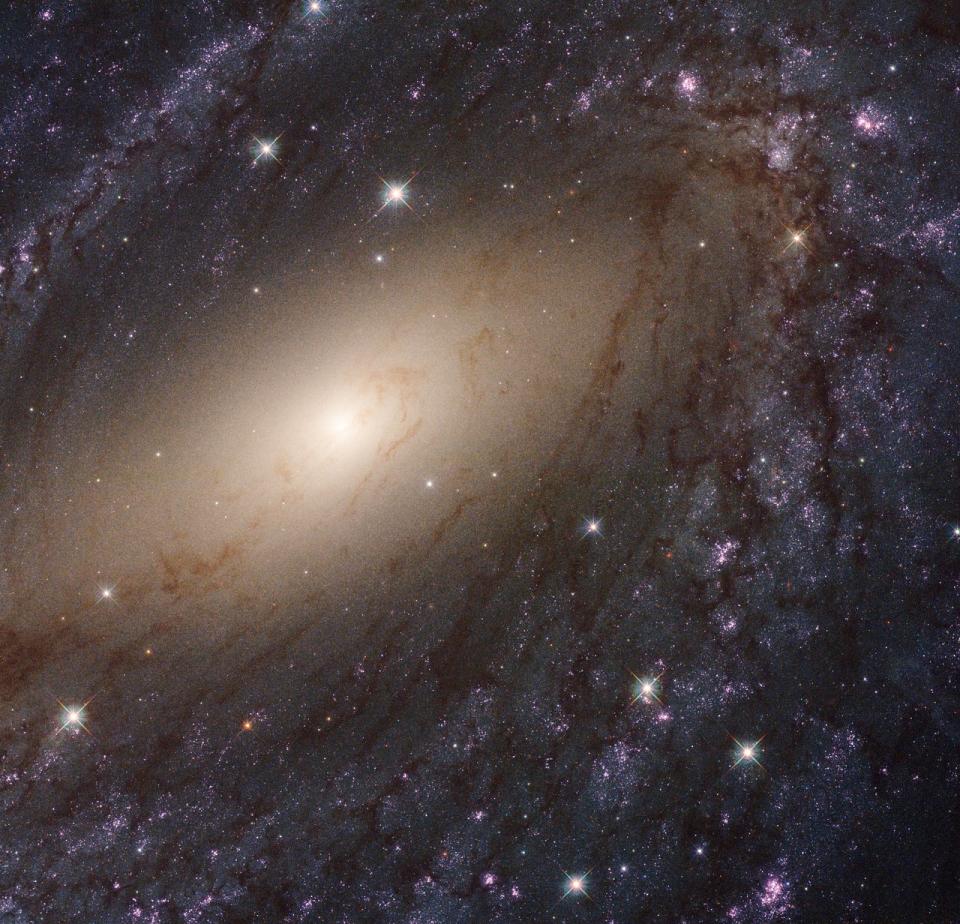Hubble captures stunning images of nearby galaxies where stars are actually forming

The Hubble space telescope has captured some jaw-dropping images of our young, nearby galaxies – where stars are actually forming.
Hubble captured the images in ultraviolet – a major tracer of the youngest, hottest stars, which are short lived and intensely bright.
The scan could help us understand how stars form.
‘There has never before been a star cluster and a stellar catalogue that included observations in ultraviolet light,’ said survey leader Daniela Calzetti of the University of Massachusetts, Amherst.

‘Ultraviolet light is a major tracer of the youngest and hottest star populations, which astronomers need to derive the ages of stars and get a complete stellar history. The synergy of the two catalogues combined offers an unprecedented potential for understanding star formation.’

Astronomers have now finished a survey called LEGUS (Legacy ExtraGalactic UV Survey) that captured the details of 50 local galaxies within 60 million light-years of Earth in both visible and ultraviolet light.
MOST POPULAR TODAY ON YAHOO
Watch: Group of workmen block suspected fly-tippers on quiet country lane
Meghan Markle’s sister launches scathing attack on Kensington Palace for not supporting father
Mystery of who moved huge ‘bluestones’ to Stonehenge could be solved
Emotional moment man wrongly accused of murder as a teen holds hands of judge who exonerated him
Alien-like lava eggs appear in Hawaii after volcanic eruption
Because of the proximity of the selected galaxies, Hubble was able to resolve them into their main components: stars and star clusters.
The team created a catalogue with about 8,000 young clusters and it also created a star catalogue comprising about 39 million stars that are at least five times more massive than our Sun.

